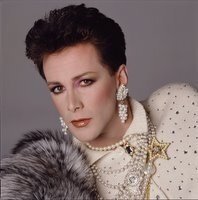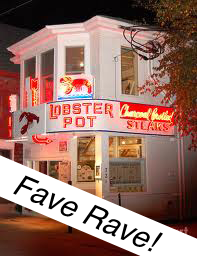Sybil’s “My Merry Memoirs!”… Chapter 11; My “Vacation” Kitchen...
/… a little story of Mummie's own, um...rehabilitation through "Convalescent Cuisine"...
Did I ever tell you about the short, ahem, “vacation” that I was invited to take from MGM after all the blacklisting controversy in 1951? Well, a while back, I had a bit of bad luck, what with the demise of the studio system in Hollywood, the advent of early television (on an 11" screen, no less!... can you imagine?), and then the HUAC hearings and the blacklisting of suspected Communist sympathizers.
Being a victim of all that, I got so upset that I had a bit of a… um… meltdown. It seems I went to the studio commissary and began throwing food at the nice ladies behind the serving counter… there was a rumor that I was particularly destructive with the wax beans and the succotash. And I began to... uh... self-medicate, as young folks call it; so after a lengthy string of failed dinner-theatre productions of Greek tragedies and an even lengthier stroll down benzedrine lane, I was “detained” by some very sympathetic police officers, and later senten--- er, invited to vacation at the Hollywood Hills Home for Semi-Hysterical Creative Persons… on the Sylvia Plath wing. My psychia---er, "social director" knew of my great fondness for cooking and fine dining (he saw that I had put on about 22 pounds!), and decided that fat was better than psychosis, so they installed me in one of their special suites with a fully operational kitchen!
And what a kitchen, with all the latest amenities! It looked like it had been lifted right out of the World's Fair with Betty Furness on a turntable! The only bad news was that all the knives and forks were plastic, and the stove and oven were heated by extra-strong light bulbs. Of course, the gas lines weren't hooked up (it WAS the Sylvia Plath wing, after all!), but I WAS allowed to make all the jello to my heart’s content! And it DID have completely washable surfaces... even spongeable cabinet doors!.. or was it spongy cabinet doors??? Anyway, after about three weeks, I had lost all that weight, but my chocolate pudding batches had ruined the figures of my fellow patients and all our wardens. It was okay though. I was able to tailor their hospital uniforms in my padded sewing room!
[Want to read other fun and funny stories here on SybilSez.com? Just enter any topic that pops into your head in the "search" window on the upper right! Who knows what might come up?...and feel free to share them with your friends!]











